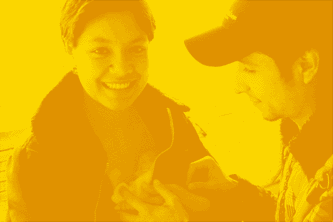The mother kangaroo method
Results
The Mother Kangaroo Method is an important model of cost-benefit ratio which improves the survival rate and quality of life of premature infants, and avoids the abandonment which is so often seen in these cases. The method, which combines hospital treatment with outpatient and home care, has achieved better results than the more costly alternative of prolonged hospitalisation.
During more than twenty years of applying the Mother Kangaroo Method, the Mother- Infant Institute of Bogotá has developed a philosophy which differs from traditional methods. The mother (not the hospital, not the medical staff) becomes the one in charge of caring for her premature infant. Her access to the newborn care wards, breast feeding and contact with her baby are decisive in stimulating the formation of a close bond that helps in her adopting and learning the techniques of baby kangaroo care. Open, friendly and effective visits to the clinic allow necessary follow-up checks to be carried out.
It has been noted that weight gain during the first year of life is 4.5 times that of the birth weight. Growth during the first year of life is an average of 28 centimetres. Very importantly, the cephalic circumference increases an average of 14.5 centimetres during the first year of life.
The benefits of the mother kangaroo position apply to both the mother and the baby. The vertical position protects babies from bronchial aspiration, one of the common causes of illness and death in low-weight babies. The ongoing proximity to the mother’s breast stimulates milk production, which otherwise is a frequent problem for mothers and low-weight babies when they are separated for long periods of time. The sociological benefits of close physical contact between mother and child has been associated with a decrease in the problem of abandonment (Whitelaw and Sleath, 1985; Martínez and Rey, 1983).
Positive results have been demonstrated through several evaluations carried out in various places and countries, with Programmes already established on the five continents. At Huddinge Hospital in Sweden, in cooperation with the World Health Organisation, an article was written on the effectiveness of the kangaroo position or direct skin contact as a method for obtaining an adequate temperature (WHO, 1986). Results show that for a 2000 gram baby, dressed, in an environment at room temperature, direct skin contact is much better than the warmth provided by a thermal blanket, incubator with hot water mattress, a special silver fabric or common incubator. The proximity of mother and baby has been associated with an absence of cries, which are known to cause additional expenditures of energy, and with the reestablishment of foetal circulation (Anderson, 1986). The kangaroo position allows babies to be isolated from infections and mothers to keep close watch. The mother’s caresses, her voice, her cooing, and even her heart beat are important factors for stimulating the baby, for his or her breathing, and in the prevention of recurrent apnea, common in premature newborns.
Replication of the Mother Kangaroo Method in other Colombian cities and in other countries in the Americas, Europe and Asia has allowed it to be adapted to differing conditions. It has also generated the development of prospective studies for objectively measuring the advantages and benefits of the Mother Kangaroo Method, carefully evaluating the safety of the method in terms of maintaining body temperature, cardio and respiratory rates, prevention of recurrent apnea and bronchial aspiration. Above all, the studies have validated the importance of constant stimulation via movement, caresses, cooing, singing and smells that the baby gets from his or her mother.
DOWNLOAD THE BROCHURE PDF
albanian (0.9 MB)spanish (0.6 MB)
english (0.6 MB)
serbian (0.6 MB)








 COUNTRY OF ORIGIN
COUNTRY OF ORIGIN OUTSTANDING IDEASS PROJECTS
OUTSTANDING IDEASS PROJECTS